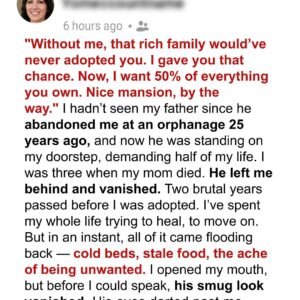At first glance, a U.S. dollar bill seems simple—green, crisp, covered in familiar faces and symbols. But every so often, if you look closely, you might notice something unusual: a tiny stamp, a pentagram, a curious symbol, or a set of small initials that don’t appear to be part of the bill’s official design.
These are known as chop marks, and though easy to overlook, they hint at a hidden, fascinating history. Each chop mark tells the story of a bill’s global travels—its journey through foreign lands, bustling marketplaces, currency exchanges, and the hands of merchants and money handlers far from American shores.
What Are Chop Marks?
Chop marks are small, often discreet stamps placed on U.S. currency by money changers, merchants, or financial handlers in other countries. These marks are more than just random doodles; they serve a critical purpose. A chop mark is an indication that the bill has been inspected, scrutinized, and deemed authentic by someone whose business relies on being able to detect counterfeits quickly and efficiently.
In regions where counterfeit bills are a common problem—places where trust in official financial institutions may not be strong—chop marks provide an informal but powerful assurance of legitimacy. Over time, a single bill might collect multiple chop marks, each one a signature of approval from different points along its journey.
A Tradition Rooted in History
The term “chop” actually finds its roots in China, which has a long and storied history with stamped currency. During the Ming and Qing Dynasties, merchants and money changers would stamp their personal mark onto silver coins to verify their authenticity and weight. This system provided a public guarantee, building confidence in the coins circulating through the economy. The practice was vital in a time when the integrity of money could not always be trusted.
As global trade expanded, the habit of marking currency followed merchants across continents. The Ottoman Empire, Southeast Asia, Africa, and Latin America all adopted versions of this verification system, especially as American dollars became a favored currency in international trade. In these regions, U.S. bills—renowned for their stability and value—were often stamped as a trusted method of confirming authenticity.
Why Are Chop Marks Used?
Chop marks serve several essential functions in areas where currency verification isn’t always straightforward:
Authentication: A chop mark confirms that the bill has been examined and deemed genuine, reassuring the next recipient.
Provenance: It acts as a traceable mark of origin, showing where the bill has circulated.
Trust Building: In countries where financial institutions may be mistrusted or where counterfeiting is rampant, chop marks build trust in the informal economy by providing a record of verification.
Thus, each mark a bill bears tells a story of its passage through financial networks—marking its acceptance in different places and by different hands.
What Do Chop Marks Look Like?
Chop marks vary widely in style and design. They often appear as:
Symbols: Tiny arrows, stars, birds, or even more intricate emblems.
Initials: Stylized letters, monograms, or shortened signatures.
Special Icons: Unique symbols like bows and arrows, commonly found on bills in circulation around Southeast Asia or Africa.
Typically, the ink used for these stamps is blue, black, or red, chosen deliberately to avoid obscuring important elements of the bill like serial numbers, watermarks, and security threads. The marks are applied carefully, respecting the bill’s usability while still leaving a clear sign of inspection.
Are Chop Marks Legal?
In the United States, there are federal laws prohibiting the mutilation or defacement of currency to the extent that it renders the money unusable as legal tender. However, chop marks are small and generally do not interfere with a bill’s functionality. They are not seen as defacement in the legal sense and are not illegal.
That said, banks and ATMs might reject heavily marked or defaced bills because they fall outside the aesthetic standards for circulating money. While chop marks add character and history to a bill, too many can make it look suspicious to automated systems or cautious cashiers.
A Quiet Story in Your Wallet
Think about it: the dollar bill in your pocket might have traveled across oceans and through marketplaces in faraway lands. It might have passed through the hands of merchants, vendors, and money changers who left their mark—a subtle, tiny reminder of its global journey. Each stamp is a quiet testament to the bill’s authenticity and a signal of trust exchanged across borders and cultures.
The next time you come across a bill bearing one of these mysterious marks, pause for a moment. You’re not just holding currency—you’re holding a piece of a greater story, a thread in the intricate web of global commerce and human connection. Every chop mark is a silent witness to the distances traveled, the trust built, and the markets bridged by something as simple—and as powerful—as a dollar.

